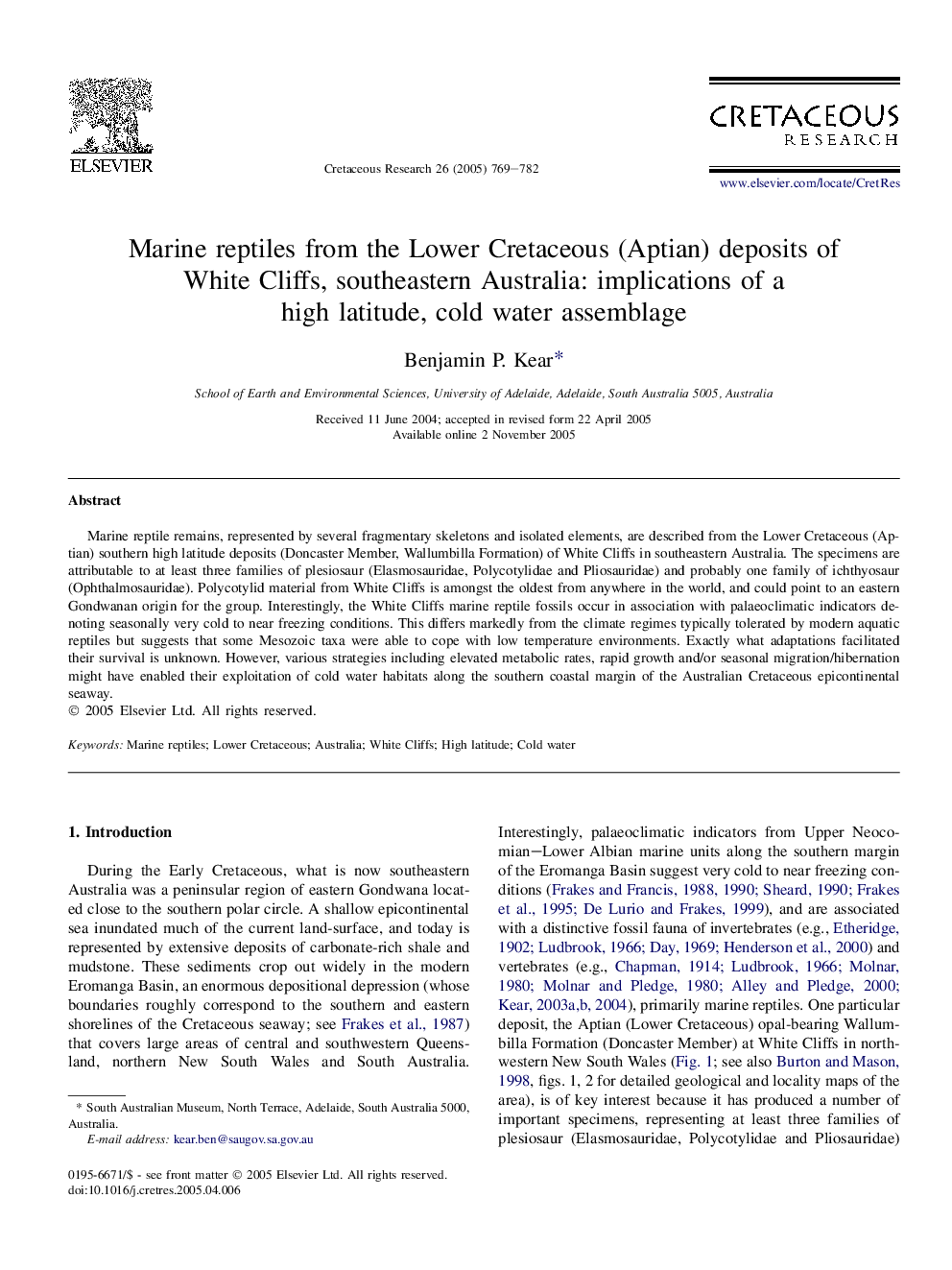| Article ID | Journal | Published Year | Pages | File Type |
|---|---|---|---|---|
| 9539013 | Cretaceous Research | 2005 | 14 Pages |
Abstract
Marine reptile remains, represented by several fragmentary skeletons and isolated elements, are described from the Lower Cretaceous (Aptian) southern high latitude deposits (Doncaster Member, Wallumbilla Formation) of White Cliffs in southeastern Australia. The specimens are attributable to at least three families of plesiosaur (Elasmosauridae, Polycotylidae and Pliosauridae) and probably one family of ichthyosaur (Ophthalmosauridae). Polycotylid material from White Cliffs is amongst the oldest from anywhere in the world, and could point to an eastern Gondwanan origin for the group. Interestingly, the White Cliffs marine reptile fossils occur in association with palaeoclimatic indicators denoting seasonally very cold to near freezing conditions. This differs markedly from the climate regimes typically tolerated by modern aquatic reptiles but suggests that some Mesozoic taxa were able to cope with low temperature environments. Exactly what adaptations facilitated their survival is unknown. However, various strategies including elevated metabolic rates, rapid growth and/or seasonal migration/hibernation might have enabled their exploitation of cold water habitats along the southern coastal margin of the Australian Cretaceous epicontinental seaway.
Related Topics
Physical Sciences and Engineering
Earth and Planetary Sciences
Palaeontology
Authors
Benjamin P. Kear,
